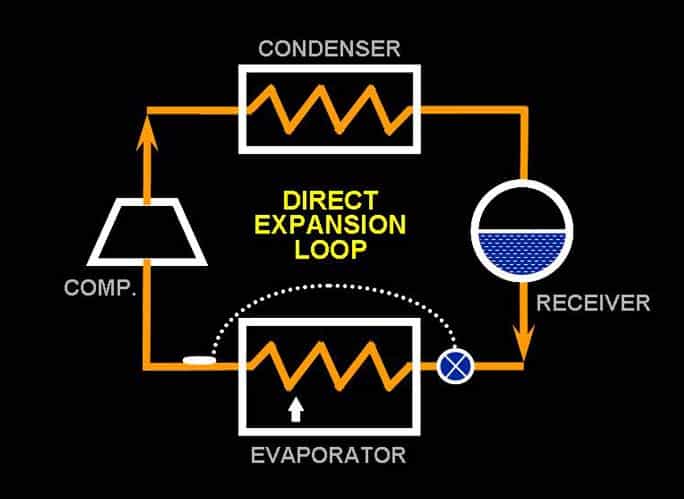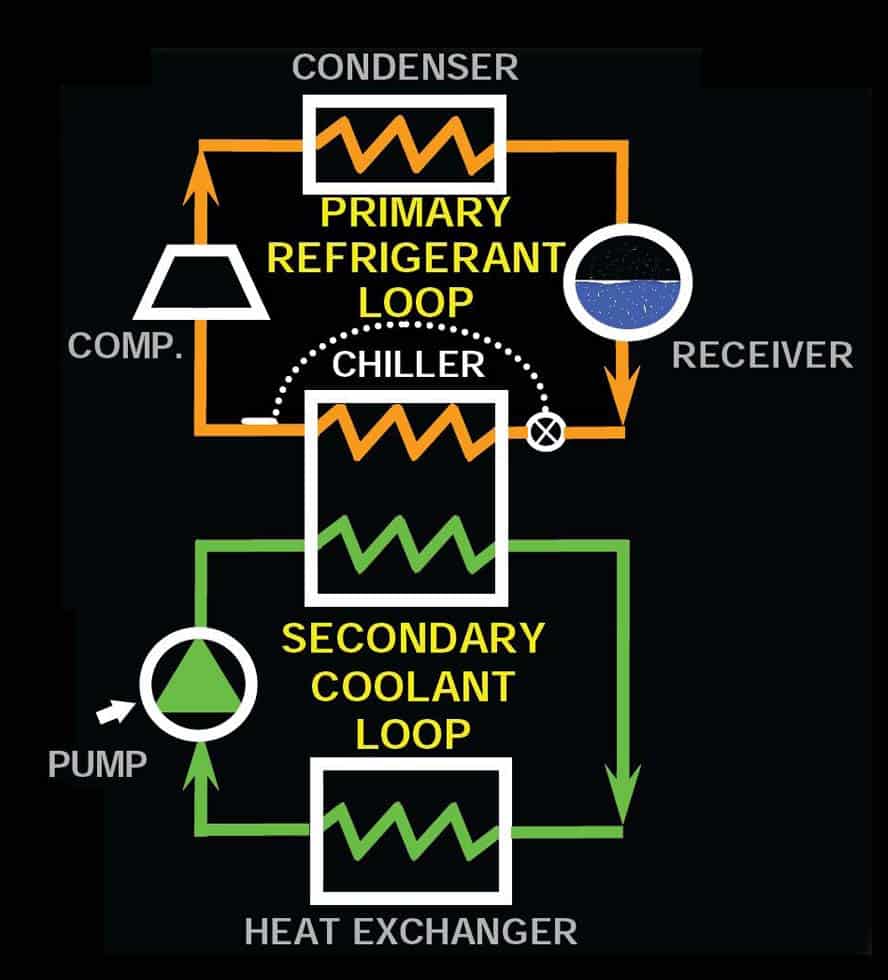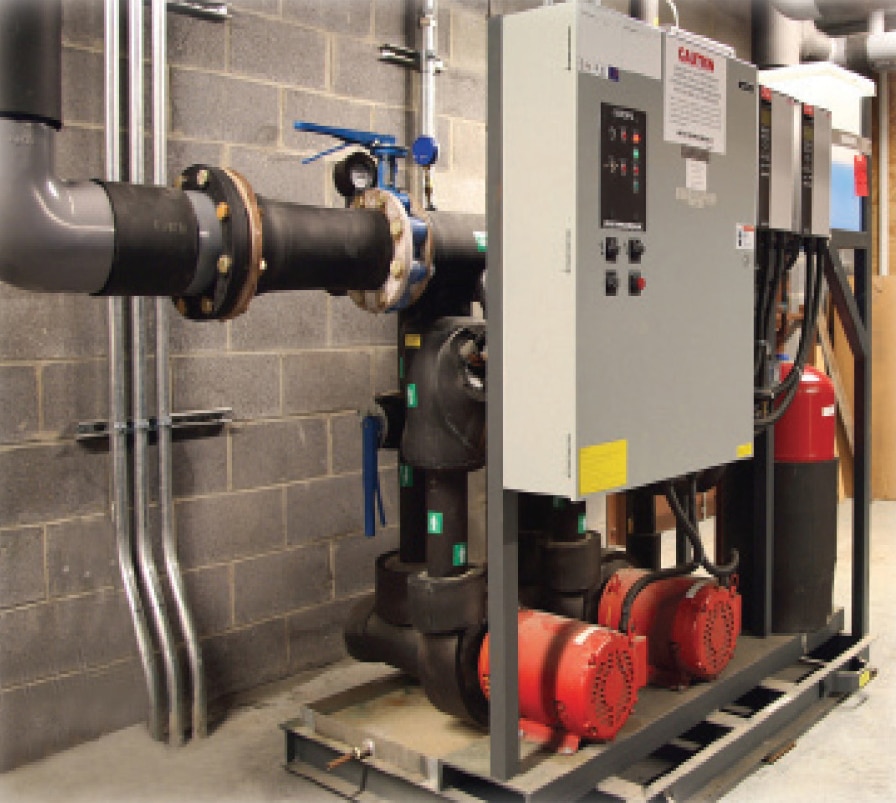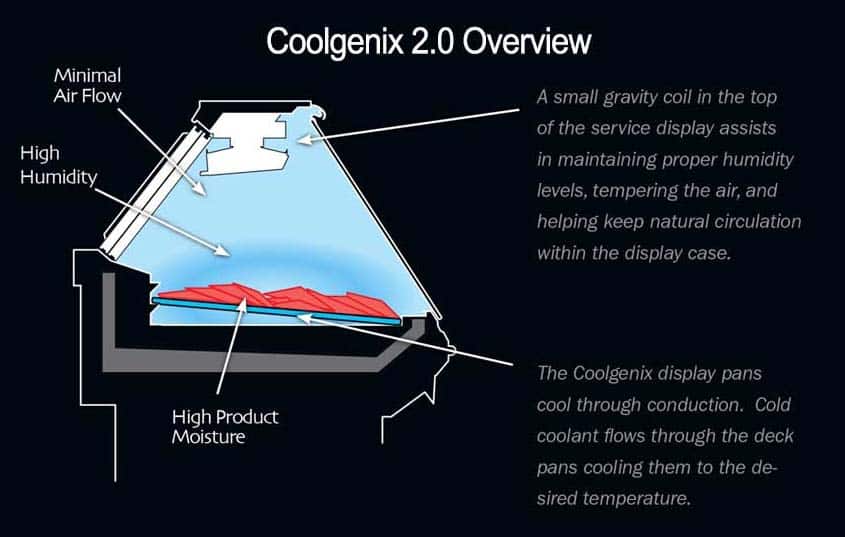A widely used heat-transfer fluid in commercial refrigeration applications, glycol (short for propylene glycol or propane-1,2-diol), is actually not a refrigerant.
Propylene glycol used as a heat transfer fluid has been around as a common means of reducing HFC refrigerant use in secondary refrigeration systems for a number of years. Secondary refrigeration systems (SN), so called because they add an additional (secondary) portion of a system to a primary portion that together make up an entire refrigeration system, can be found in significant numbers throughout the retail food sector. They are also relatively common in industrial and warehouse/distribution applications, though not quite to the level of ammonia systems that have been in uses in the former settings for far longer.
Following the Montreal Protocol in 1987, an international treaty designed to protect the ozone layer by phasing out the production of environmentally harmful substances,
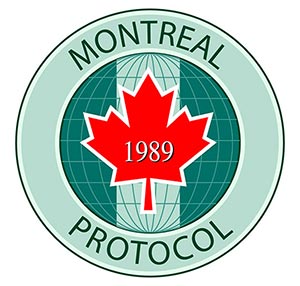 refrigeration users and manufacturers began to look toward a future of reduced reliance upon chlorofluorocarbons (CFCs) and eventually hydrochlorofluorocarbons (HCFCs) and hydrofluorocarbons (HFCs). The treaty sought the elimination of CFCs and subsequent international agreements eventually codified the phase-out of HCFCs and more recently a move toward reducing HFC use by eighty percent over the next 30 years as well. These treaties set the industry on a path toward sustainability and away from synthetic (CFCs, HCFCs and HFCs) refrigerants and toward natural refrigerants such as eventually CO2, ammonia and propane. But before food retailers and other non-industrial users began to consider these alternatives, chilled-fluid secondary loop systems were seen as an achievable approach that remains widely in use today.
refrigeration users and manufacturers began to look toward a future of reduced reliance upon chlorofluorocarbons (CFCs) and eventually hydrochlorofluorocarbons (HCFCs) and hydrofluorocarbons (HFCs). The treaty sought the elimination of CFCs and subsequent international agreements eventually codified the phase-out of HCFCs and more recently a move toward reducing HFC use by eighty percent over the next 30 years as well. These treaties set the industry on a path toward sustainability and away from synthetic (CFCs, HCFCs and HFCs) refrigerants and toward natural refrigerants such as eventually CO2, ammonia and propane. But before food retailers and other non-industrial users began to consider these alternatives, chilled-fluid secondary loop systems were seen as an achievable approach that remains widely in use today.
Secondary Refrigeration Systems
Secondary refrigeration systems were one of the first approaches to be adopted in response to the movement toward less environmentally harmful refrigerants. The idea behind them is to limit the amount of synthetic refrigerants used in a system. In a traditional centralized refrigeration system, a single refrigerant is used to transfer heat from the display case and walk-in evaporators through compressors to a condenser, often located on the roof of the store, and from the condenser to the outside (ambient) air. From there, the refrigerant at this point, now a liquid-vapor mixture is expanded through a valve back into the evaporator in an entirely gaseous state where the process continues in the same fashion. It’s this expansion of the gas back from a liquid that gives these systems a name they are often characterized by: “DX” for direct expansion. Along the way, the refrigerant changes state back and forth from a gas to a liquid and from a liquid back to a gas.
DX System Diagram
Secondary heat transfer fluids, however, do not change state. Instead, they remain in a liquid state throughout the entire heat transfer process. The difference between these fluids and refrigerants has to do with what might be thought of as the quality of heat either absorbed or released by a substance. In the case of secondary heat transfer fluids, the action of sensible heat is relied upon to accomplish the removal of heat from one place to another. In practice, this simply means either raising or lowering the temperature of the fluid. Latent heat, as relied upon for refrigerants, means that enough heat is absorbed or released by the refrigerant to cause a change in the state of the refrigerant.
Secondary refrigeration systems rely on both types of heat, latent in what’s called the primary side of the system, and sensible in the secondary side. A major advantage of secondary systems over traditional systems is that with them, users can significantly reduce the amounts of refrigerant needed for them to operate. Secondary systems are typically designed so that only a heat transfer fluid is circulated through a store’s piping to its display cases, coolers and freezers. The only refrigerant used in the system is strictly confined to the primary side which only circulates the refrigerant through piping between the refrigeration rack (on which the compressors, heat exchangers and other equipment sit) and the condensers usually outside of the store. Taking this approach requires only a fraction of the amount of refrigerant that would otherwise be needed in a traditional system.
Secondary Glycol System Diagram
Different fluids have been are used for this purpose. These have ranged from water to brines (salt solutions such as Dynalene) to oils. Perhaps the mostly widely used for commercial secondary system medium temperature applications, however, has been solutions of water and propylene glycol. Medium temperature applications are ones for refrigerated as opposed to frozen goods.
As noted, the secondary side of these systems rely on sensible heat instead of latent heat. The latter is used on the primary side of the system, but amongst the display cases, walk-in coolers and other medium temperature fixtures in a store, sensible heat is the means by which heat is transferred. As with traditional refrigeration systems, a so-called coil is used in these fixtures. But whereas the coils used in those systems are called evaporators, since the refrigerant that flows through them changes state from a liquid to a vapor (i.e., boils) as it absorbs heat, the coils in secondary display cases and elsewhere are called heat exchangers.
Circulating through a fluid loop piping system, as opposed to circuited pipe systems (the type often used for traditional refrigeration), the glycol solution is sent out to the store at relatively low pressure (20- to 60-psi for SN vs. 55- to 280-psi for DX). Taking this approach can reduce the total refrigerant charge of a system by a factor of 10, from 3,000 – 5,000 pounds to only 300 – 500 pounds since most of the cooling medium of the system is the glycol in its loop piping instead of refrigerant in a traditional circuited piping system. On top of
